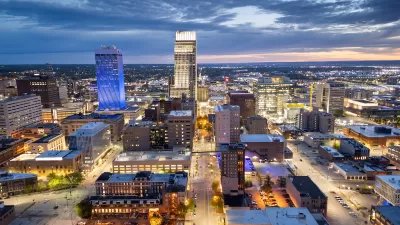Although the current housing crisis has been compared with the housing crash of the late 2000s, experts caution that affordability issues could plague the U.S. housing market for years to come.

With median home prices up by 20 percent in the last year and rents rising across the country, some believe that something has to give, soon. But experts warn that the overheated housing market we're seeing now isn't just a bubble, reports Emily Badger. While rampant price growth similar to today's preceded the 2007 housing crash, at that time, the rise in costs was experienced by less than half of U.S. cities, compared to 80 percent today.
As Badger writes, "There’s probably no quick reprieve coming, no rollback in stratospheric home prices if you can just wait a little longer to jump in." It's "about the fundamentals," says Jenny Schuetz of Brookings: "not enough houses, and huge numbers of people wanting homes." For households on the verge of homeownership before the pandemic, the explosive rise in prices may have pushed them back by years.
As housing experts and advocates have repeatedly pointed out, the imbalance between supply and demand is worsening the housing crisis, but policymakers are not taking aggressive steps to correct the problem. And even if the migration caused by remote work evens out, other factors like institutional investors are likely here to stay. "Today, first-time home buyers in once-affordable markets have competition from all kinds of sources that didn’t exist a generation ago: from global capital, from all-cash 'iBuyers' that size up homes by algorithm, from institutional investors renting single-family homes, from smaller-scale investors running Airbnbs."
Ultimately, economists interviewed in the article express a pessimistic outlook, with most foreseeing that affordability will continue to be a major concern for American households for several years.
FULL STORY: Something Has to Give in the Housing Market. Or Does It?

Study: Maui’s Plan to Convert Vacation Rentals to Long-Term Housing Could Cause Nearly $1 Billion Economic Loss
The plan would reduce visitor accommodation by 25,% resulting in 1,900 jobs lost.

North Texas Transit Leaders Tout Benefits of TOD for Growing Region
At a summit focused on transit-oriented development, policymakers discussed how North Texas’ expanded light rail system can serve as a tool for economic growth.

Why Should We Subsidize Public Transportation?
Many public transit agencies face financial stress due to rising costs, declining fare revenue, and declining subsidies. Transit advocates must provide a strong business case for increasing public transit funding.

How to Make US Trains Faster
Changes to boarding platforms and a switch to electric trains could improve U.S. passenger rail service without the added cost of high-speed rail.

Columbia’s Revitalized ‘Loop’ Is a Hub for Local Entrepreneurs
A focus on small businesses is helping a commercial corridor in Columbia, Missouri thrive.

Invasive Insect Threatens Minnesota’s Ash Forests
The Emerald Ash Borer is a rapidly spreading invasive pest threatening Minnesota’s ash trees, and homeowners are encouraged to plant diverse replacement species, avoid moving ash firewood, and monitor for signs of infestation.
Urban Design for Planners 1: Software Tools
This six-course series explores essential urban design concepts using open source software and equips planners with the tools they need to participate fully in the urban design process.
Planning for Universal Design
Learn the tools for implementing Universal Design in planning regulations.
City of Santa Clarita
Ascent Environmental
Institute for Housing and Urban Development Studies (IHS)
City of Grandview
Harvard GSD Executive Education
Toledo-Lucas County Plan Commissions
Salt Lake City
NYU Wagner Graduate School of Public Service





























